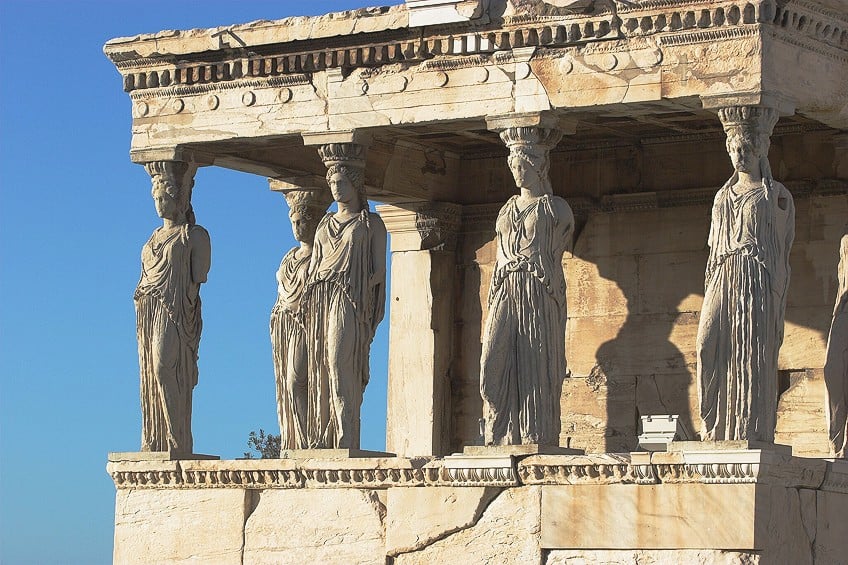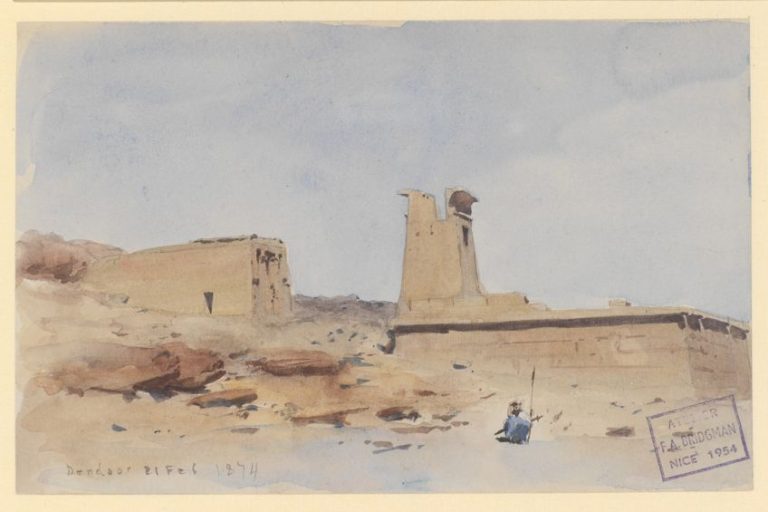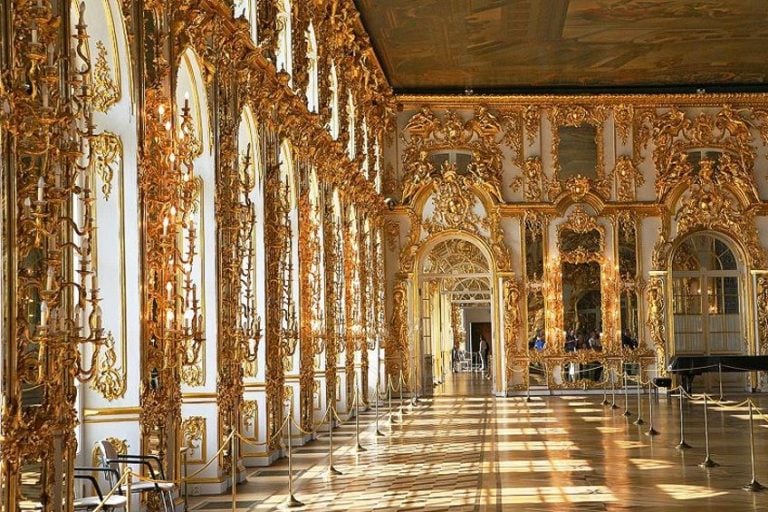History of Architecture – Building Through Time
The history of architecture is a long and varied thing that changes depending on the culture and location of said architecture. However, we will attempt to chart the evolution of architecture from its earliest origins to what it would become in the present in the below article. We will do this by examining a number of different architecture time periods in chronological order, and focusing on each to see what distinguished them. If architectural history is something that interests you, then this should be worth a read!
The History of Architecture
Architecture, in very basic terms, is the term used to describe the design and construction of buildings. However, it does not actually involve the physical construction of buildings as that is something very different that one could focus on. So, when was architecture invented? How did it develop? What are the many different types of architecture that have developed over the centuries? What distinguishes different architecture time periods from one another. That is what the focus of this article will be geared towards.
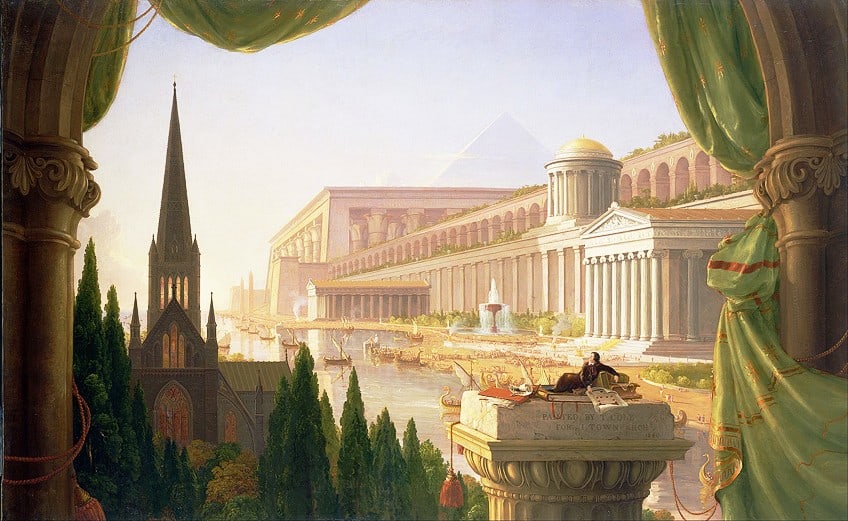
However, it should be noted that architectural history is also a rather difficult thing to trace in its entirety as there are a number of different architectural forms and periods that are dependent on specific locations. For this reason, this article will predominantly focus on the evolution of architecture in the Western world. It must be remembered that there are other architectural trends that have developed outside of the West, but that will be discussed in more detail at the conclusion of this list.
So, let’s get this underway and see what we can learn about the history of architecture.
Neolithic Architecture (10,000 – 2,000 BCE)
| Dates | 10,000 – 2,000 BCE |
| Common Characteristics | Simple and earthen |
| Country of Origin | Middle-Eastern regions |
In terms of the history of architecture, we as humans started to develop and construct buildings rather than solely living in caves in the later period of the Stone Age known as the Neolithic period. This period of time saw the transition of humanity from the previous hunter-gatherer society into an agricultural and pastoral society.
This led to us to settlement over nomadic existence, and so the construction of buildings became a necessity.
Some of the earliest instances of Neolithic architecture entailed the use of mud houses with rectangular designs. These were only our instances of housing design, and it was about the same time when we started to develop some of the earliest instances of megalithic architecture for larger and more important sites, such as religious architecture. These structures were instead made of large stones.
Classical Architecture (5th Century BCE – 3rd Century CE)
| Dates | 5th century BCE – 3rd century CE |
| Common Characteristics | Columns and pediments |
| Country of Origin | Greece and Italy |
Classical architecture is where we started to see the origins of much of subsequent Western architecture, although this architecture time period did have an impact on other, non-Western countries and cultures through sheer cultural power and colonialism. This term refers to a combination of ancient Greek and Roman sources, but it was through the Roman civilization that much of this kind of architecture would continue throughout Europe.
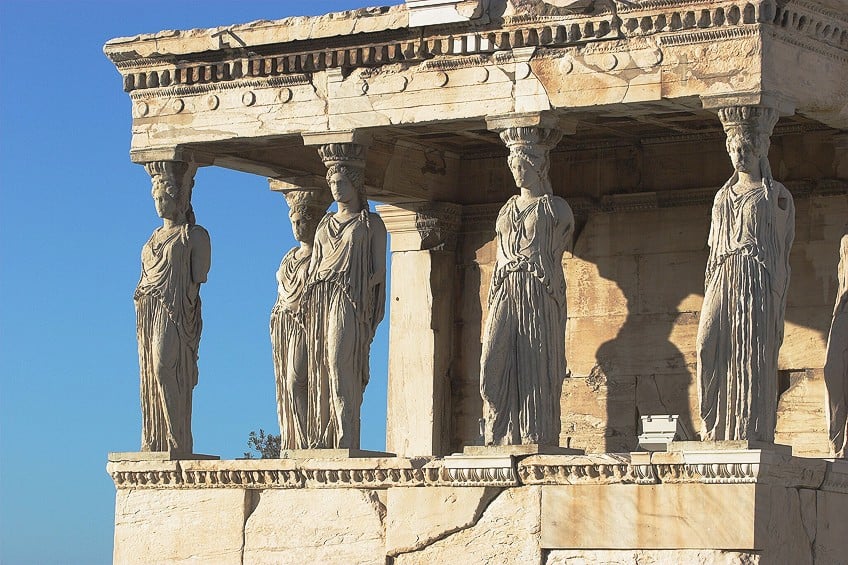
Some of the primary attributes that can be related to this part of architectural history include the use of the column and lintel designs of ancient Greece and the later use of extensive domes, arches, and aqueducts of Roman architecture. Together, these two cultures would form the basis for much of later architectural trends.
Byzantine Architecture (330 CE – 1453 CE)
| Dates | 330 CE – 1453 CE |
| Common Characteristics | Domes and symmetry |
| Country of Origin | Turkey |
Byzantine architecture arose during the separation of the Roman Empire. The Byzantine Empire arose out of what had been the Eastern Roman Empire, but as an architectural period, the Byzantine designs did originate earlier. This empire would become one of the most powerful in the world and it would persist for many centuries after the collapse of the Western Roman Empire (which is what we often consider to be the more traditional understanding of the term “Roman Empire”).
Byzantine architecture is marked by a number of central characteristics.
Many of them are also found in Classical architecture, such as the use of domes and arches. However, Byzantine architecture is distinguished from earlier Roman architecture by the inclusion of arched windows, smaller domes constructed around larger domes, and mosaic designs. The last of these characteristics has become one of the most commonly recognized aspects of Byzantine design and architecture.
Romanesque Architecture (Mid-11th Century – 12th Century)
| Dates | Mid-11th Century – 12th Century |
| Common Characteristics | Thick walls and arches |
| Country of Origin | France |
Romanesque architecture was a variety of architecture that arose in France during the Middle Ages. It was directly inspired by Roman architecture, and as such, it did make use of a lot of those general styles. This form of architecture is particularly associated with the Normans, and it would make its way into England during the period of Norman rule in the country after the conquest that followed the victory of William the Conqueror in 1066.
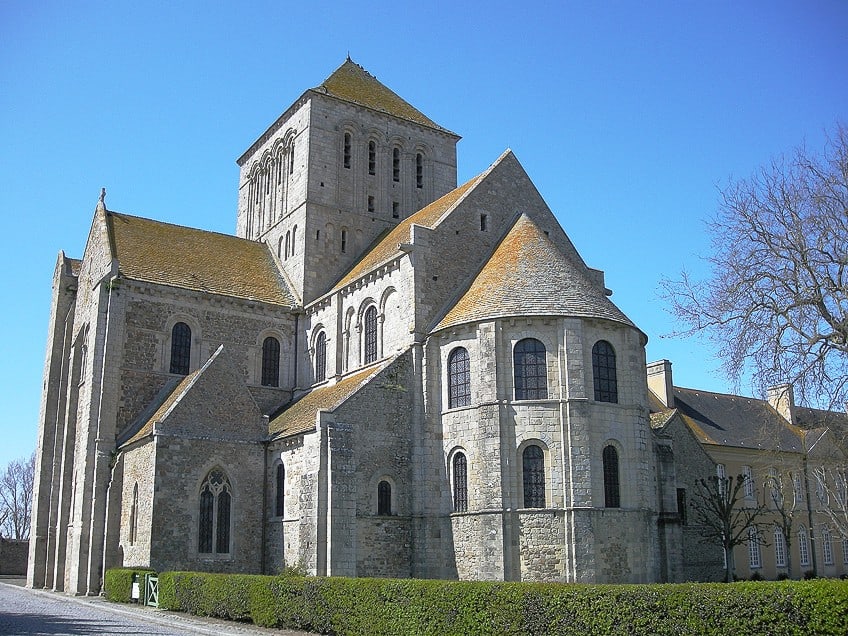
This type of architecture is remembered in the history of architecture for making use of a large general design with thick walls, rounded arches, barrel vaults, large and simple towers, and arcades that were more decorative in their presentation. Some of the most famous old castles make use of this style, and it has often become associated with less ornate and sturdier castle design.
Gothic Architecture (Mid-12th Century – 16th Century)
| Dates | Mid-12th century – 16th century |
| Common Characteristics | Pointed arches and height |
| Country of Origin | France |
Gothic architecture originated in France but quickly spread throughout Europe. This part of architectural history would arise out of the earlier Romanesque architecture and is considered one of the final architecture time periods of the Middle Ages. Many cathedrals were designed using Gothic architectural methods, and the style has often become synonymous with religious and royal structures as it is far more ornate than many styles of architecture that had come before it.
The primary characteristics of this period in the history of architecture is its overwhelming use of the pointed arch.
The use of flying buttresses, rib vaults, and highly ornate decoration became some of the most common elements to be found in these structures. Another of the very common characteristics was the use of stained-glass windows in churches. Some of the most stunning examples of stained glass were produced during this period of architectural history.
Renaissance Architecture (Early-15th Century – 16th Century)
| Dates | Early-15th Century – 16th Century |
| Common Characteristics | Symmetry and proportion |
| Country of Origin | Italy |
Architecture is one of the many areas that developed during the Renaissance, and while it may have originated in Italy, it soon spread throughout the continent. While the Renaissance in general is noted for being a resurgence of many different artforms, and there was a proliferation of various academic fields, it is also noted for bringing Classical influences back into architecture. This was because of the discovery of ancient Roman texts and sites that greatly influenced Renaissance artists and architects.

Some of the primary characteristics for which this architecture time period is known is the reuse and development of Classical architectural styles. This meant a use of columns, domes, pediments, and so on. In addition to this, because of the developments in mathematics and other fields, there was a move towards symmetrical and rational construction with proportion of buildings being of immense importance.
Baroque Architecture (16th Century – 18th Century)
| Dates | 16th century – 18th century |
| Common Characteristics | Grandeur and decoration |
| Country of Origin | Italy |
Baroque architecture originated in Italy in response to the sparser designs of Renaissance architecture and the rise of Protestantism. Essentially, during this period, the Protestant Reformation had swept its way through Europe, and the Catholic Church had a desire to elevate church design.
This led to the Baroque use of extensive ornamentation that was meant to be a kind of shock-and-awe tactic to show the superiority of the Catholic Church over the more simplistic designs of Protestant churches.
This period of architectural history is noted for making use of ornamentation throughout a structure. This meant the extensive use of art, colonnades, stucco designs, decorative elements across walls, bright colors, and the use of expensive materials, like marble. The basic idea was to have a structure be a piece of art rather than simply being a structure.
Rococo Architecture (1730 – 1770)
| Dates | 1730 – 1770 |
| Common Characteristics | Highly ornamental and asymmetrical |
| Country of Origin | France |
Rococo architecture arose out of Baroque architecture and is actually also known as Late Baroque architecture because of it. While the earlier Baroque style had been characterized by an attempt at grandeur, and to separate the kinds of religious structures that the Catholic Church wanted to produce, Rococo was often far less religious in its presentation, and was instead playful and theatrical.

If Baroque architecture is considered to be overly ornate, then Rococo is that same mentality cranked up far higher than ever before. Rococo interiors often make use of walls that do not have a single blank section. Every wall is covered in ornamentation, and this also often operated alongside trompe-l’œil frescoes, which is a kind of optical illusion design that blends paintings and sculptures to be jarring to the eye. Many palaces made use of this style because of the inherent decadence that it exudes.
Neoclassical Architecture (Mid-18th Century – 19th Century)
| Dates | Mid-18th century – 19th century |
| Common Characteristics | Scale and simplicity |
| Country of Origin | Italy and France |
Neoclassical architecture is another revival of Classical architecture. It arose in the 18th century in a number of countries but persisted far later than many other architectural styles do. In addition, it can still be seen in many structures to this day as it is an attempt at a more modernized understanding and usage of Classical architectural elements.
This form of architecture is noted for the use of grand scale, geometrical designs, blank walls, and Classical elements, like columns and arches.
The basic idea behind this period of architectural history is that it was meant to be a counter to the excesses of Baroque and Rococo architecture. While those styles channeled exuberance and decadence, Neoclassical architecture was meant to be far more serious and restrained.
Exoticism Architecture (1830 – 1920s)
| Dates | 1830 – 1920s |
| Common Characteristics | Non-Western influences |
| Country of Origin | Non-specific |
Exoticism architecture refers to one of the more peculiar and problematic architecture time periods. During this time, there was extensive influence out of so-called “exotic” cultures that European colonialism had come into contact with as it progressed around the world. Much of this became tied up in orientalist mentalities in which places, such as China, became objects of fascination and there was an emulation of these foreign styles in European settings. This period is a problematic one as it fetishizes other cultures that were also often subjugated under the colonial rule of the countries that were treating them as if they were exotic and different.
Art Nouveau Architecture (1890 – 1910)
| Dates | 1890 – 1910 |
| Common Characteristics | Organic lines |
| Country of Origin | Belgium |
Art Nouveau architecture is a style of architecture that originally arose in Belgium but quickly spread throughout Europe and the United States. It saw its beginnings at the end of the 19th century, and it reached its height by the early years of the 20th century. This part of the history of architecture did not last all that long in comparison to some other architecture styles, but its decorative style would go on to be influential for many years to come.
It can still be found today, but not usually in architecture. It’s influence on the arts is likely more pronounced than its influence on architecture in the long term.
Some of the primary characteristics for which this style of architecture is known is its use of natural imagery and designs. This entailed the use of organic-inspired interior and exterior decoration, such as flowing flowers, leaves, and vines. In addition, it was meant to be beautiful. It did not need to serve any kind of a functional purpose and was in juxtaposition to styles like Neoclassicism, with its focus on unadorned walls. Some truly stunning structures arose out of this short-lived, but beloved artistic movement.
Modernist Architecture (Late-19th Century – 20th Century)
| Dates | Late-19th century – 20th century |
| Common Characteristics | Reduced ornamentation and modern materials |
| Country of Origin | International |
Modernist architecture arose at the end of the end of the 19th century, in some senses, but only truly developed during the 20th century. It still, in many ways, persists to this day, but has ultimately been shifted aside by more Postmodern architectural styles. This architectural period arose in response to the needs of the industrial age. It was during this period that large office buildings, skyscrapers, and massive factories started to be constructed.

Many of the most common characteristics of Modernist architecture are concerned with the modernization of architecture, and this meant the use of new, modern materials. This is why the Modernist period led to the proliferation of the use of reinforced concrete, glass, and steel. In addition, this period of time would see the development of far more minimalistic structures and designs. For instance, the open-plan interior was created during this period because the development of steel frames had rendered load-bearing walls unnecessary.
Art Deco Architecture (1920s – 1930s)
| Dates | 1920s – 1930s |
| Common Characteristics | Geometric and machine age designs |
| Country of Origin | Western Europe and the United States |
Art Deco refers to far more than only architecture, but there are a number of stunning structures that were designed during this architectural period. This period arose out of several inspirations, such as Art Nouveau, Bauhaus, and Cubism. It was a direct and bold embracing of the machine age, and a glorification of industrialism and, for this reason, it has long held many connections to capitalism. This style developed during the 1920s and 1930s but started to fall out of favor during the Great Depression.
However, it has seen a resurgence since then and has become popular in all manner of designs (although not in architecture).
When it comes to Art Deco architecture, this period of time is marked by a move towards geometric designs, clean shapes, and expensive materials. Many of the structures that made use of this style often included the use of ornamentation on the exterior while the interiors were decorated in geometric artworks that extolled the might of industry while using materials like gold and ivory alongside more modern materials like steel and even plastic. These designs have become some of the most famous images of Art Deco art and architecture, and they have remained influential to this day.
International Style Architecture (20th Century)
| Dates | 20th century |
| Common Characteristics | Reduced ornamentation, open design, and modern materials |
| Country of Origin | International |
International Style architecture arose out of Modern architecture, and it developed during the first half of the 20th century on an international scale. As it arose out of Modernism, it shares many of the same goals as its older cousin. Many instances of Modern and International Style architecture can be considered quite similar to one another, but these structures were generally constructed in opposition to the kind of decadent designs that had become more common during the Art Deco period.
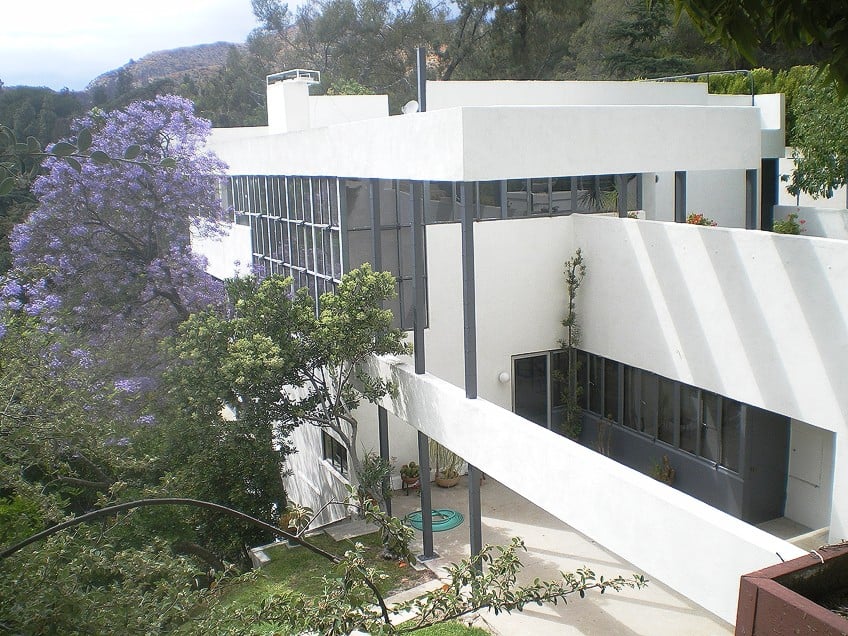
Some of the most common characteristics of the International Style included its use of the same kind of modern materials as Modern architecture, such as steel, reinforced concrete, and glass. However, the structures designed in this style were generally plain, purely functional, and used no real decoration or ornamentation. They were built for a specific function and there was no need for anything else to be added to the buildings that adopted this style. This would also come at about the same time as the Great Depression, and less opulent structures were generally desired to match the harsh economic realities that faced many ordinary people in the world.
Brutalist Architecture (1950s – 1970s)
| Dates | 1950s – 1970s |
| Common Characteristics | Minimalism and exposed elements |
| Country of Origin | United Kingdom |
Brutalist architecture is a style of architecture that arose in the mid-20th century in the United Kingdom. However, it did quickly spread into other countries. This period of time was marked by an attempt to reconstruct after the devastation of the Second World War.
This meant that, in a period of time in which there were few resources to go around, architecture needed to adapt.
This meant that many of the common characteristics of Brutalist architecture entailed the use of exposed concrete, monochromatic color palettes that often required little to no paint, the use of small windows, and the occasional use of exposed architectural elements, like piping. This gave many Brutalist buildings a kind of unfinished quality to them, but it also meant that they could be more cost-effective and utilitarian.
Postmodern Architecture (Late-1950s – Present)
| Dates | Late-1950s – Present |
| Common Characteristics | Non-standard design |
| Country of Origin | International |
Postmodern architecture is a bit of a difficult concept to define because it does not truly have any specific and easily definable characteristics. This is because there are many different types of Postmodern architecture. However, the general idea for Postmodern architecture arose during the 1960s and 1970s as a reaction against Modernist architectural styles.
These earlier styles wanted structures that made use of simple and ordered designs, and the Postmodernist architects wanted to rebel against that.
For this reason, some of the more common general characteristics of Postmodern architecture entail a general move towards contradiction, ornamentation, the use of borrowed elements, the blending of various styles, and so on. However, this is a very generalized way to look at Postmodern architecture as different styles developed in entirely different ways and presented themselves through wholly different methods.
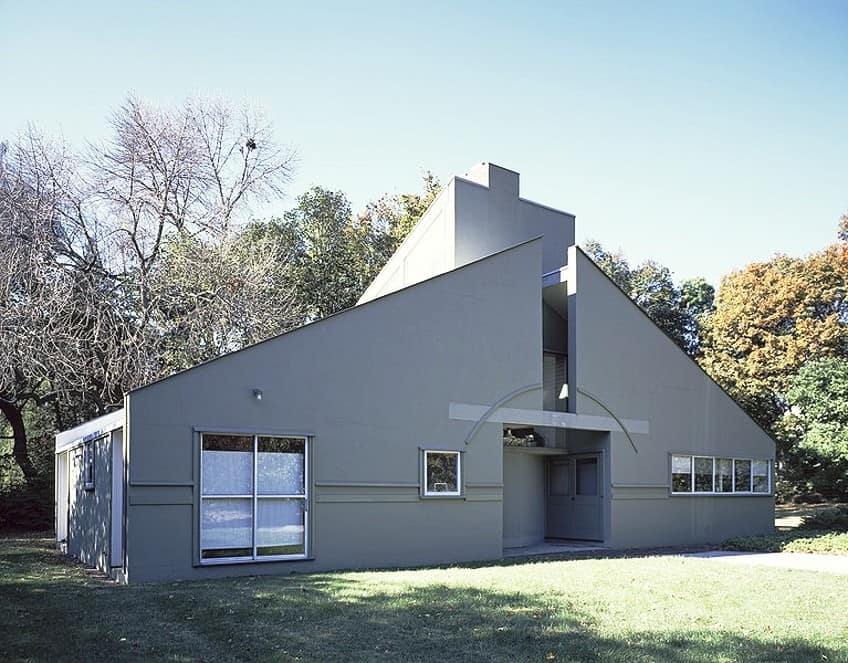
Some of the most common Postmodern architectural styles include High-Tech architecture, which makes specific use of the latest technologies in architecture, or Deconstructivist architecture, which entails the use of non-architectural elements, sophisticated design, and unusual shapes and forms. Each of these are different types of Postmodern architecture, and they have their own specific characteristics.
Architecture Today
Now that we have traced the history of architecture from some of its earliest days to its present, what about contemporary architecture? Well, the last item on the list above was Postmodern architecture, and this architectural style does still persist. It is not a dead style and there are many examples of Postmodern architecture still in construction. However, when it comes to contemporary architecture, it is good to remember that there is no such thing as a type of architecture called “contemporary architecture”. We often define architectural time periods in retrospect. We can look back and see how certain styles developed, blossomed, and eventually died. This cannot really be done in the moment because we cannot tell the height of a movement until it has died. And we obviously cannot tell when a movement has died until it has died.
So, there are many different instances of contemporary architecture in a variety of different styles. Some of the most common types of contemporary architecture include sustainable architecture, which is a form of architecture that has attempted to respond to the issues with our environment. However, this is not the only form of contemporary architecture and there are many more that are constantly developing and evolving. For this reason, the evolution of architecture is far from its end. We do not know what will come next, but the history of architecture continues to march ever onwards.
The Issue With Tracing the History of Architecture
It was mentioned in brief at the beginning of this article, but architectural history is not a Western concept. Every country has its own history with regards to architecture on both a national and vernacular level. Some countries have rich and individualized architectural histories, such as China and pre-Colombian Mesoamerican countries. However, we predominantly focused on the architectural history of Western countries in this article as we are writing in the English language, which is a Western language.
When it comes to the West, there tends to be less of a distinction between countries.
What happens in one European country often spread to other European countries, and this is why, for instance, there are examples of Renaissance architecture from Italian, French, German, and English sources. This is not as applicable to vernacular architecture though, which is practically impossible to trace in a linear fashion as the term “vernacular architecture” refers to the architecture of a specific region.
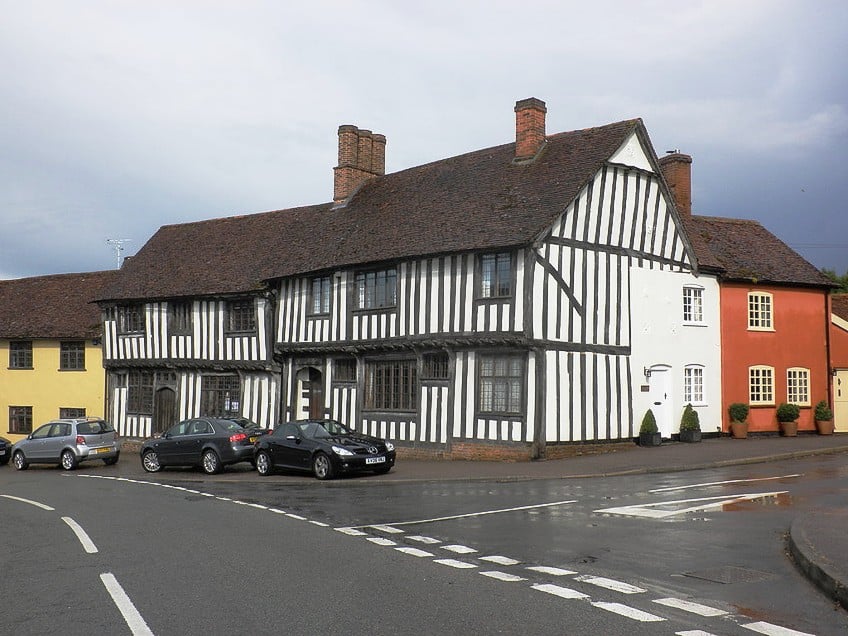
Vernacular architecture can be architecture that is specific to a small region, town, or city. For instance, there are some cities that have their own, unique architectural flair that is distinct from both the rest of the world and the country in which that city is located. This is not only the case in Western countries, but throughout the world. For instance, we tend to refer to “Chinese architecture” as a unified whole, yet there are many instances of vernacular architecture in China that do not conform to what we think of as “Chinese architecture”, because variation occurs wherever humans build anything, and many of these variations can be because of the materials that could be found in those locations or the specific geography that could be found there.

All of these factors, and more, contribute to a difficult response to the so-called evolution of architecture as there are so many types of architecture around the world that places them all in a linear sequence of architecture time periods that are then related to one another is impossible and untrue. Not every architectural period was influenced by what came before in some other country. For instance, the influence of Classical architecture touched almost all of subsequent architectural history in Europe and beyond, but it didn’t touch pre-Colombian America. They had never heard of the Greeks or Romans. Why would they have been influenced by what those cultures developed? As can be seen, there are many issues with tracing the history of architecture.
We have now arrived at the end point of this look into the history of architecture. When was architecture invented? What are the different architecture time periods? Which architectural periods had influence over other architectural periods? All of these questions have been answered over the course of this article, as we traced Western architectural history from its earliest origins to its present existence. Hopefully, this has been an enjoyable and informative examination of the evolution of architecture, but always remember that there are many other forms of architecture that do not fit as neatly into the usual understanding of the history of architecture.
Frequently Asked Questions
What Is Architecture?
Architecture is the term used to describe the academic field of designing and constructing buildings. There have been many different types of architecture over the years, and different architecture time periods have led to different understandings of what should and should not be used in the design of structures.
When Was Architecture Invented?
The earliest origins of architecture can be traced to the Neolithic period. During this period of human history, we started our transition from the hunter-gatherer societies of the older Stone Age period and instead began to establish permanent settlements. Earlier humans had mostly resided in caves. By this point, we started to build our own homes, places of worship, and a number of other kinds of structures.
What Are the Most Notable Architecture Time Periods?
Some of the most notable architecture time periods include the Classical period, which began in ancient Greece and Rome, the later medieval architectural styles, like Romanesque and Gothic architecture, the Renaissance period, and the movement into more Modern styles. There have been a great many architecture time periods over the course of the history of architecture.
What Are the Most Famous Architectural Styles?
The most famous architecture time periods and the most famous architectural styles often coincided with one another. This has led to certain periods having the most notable styles. The height and pointed nature of Gothic architecture, the highly ornate and decorative nature of Baroque and Rococo architecture, and the minimalism of Modernist architecture are all immensely famous examples of architectural styles.
When Did Architecture Become an Academic Field?
While architecture as a concept can be traced to the Neolithic period, it was only in the 18th century when the idea of an actual architectural profession came into being. For instance, some of the most famous architects from the Renaissance era were also sculptors and painters, and they were not generally seen as only architects. This would start to change in the early-to-mid-19th century, when architecture became a distinct field of study in university settings.
Who Is the Most Influential Architect in History?
In terms of the history of architecture in the West, one could likely name a figure like the ancient Roman architect Vitruvius as the most influential. While he may not be as famous by today’s standards, he was the architect who wrote a treatise on Classical architecture that went on to influence Renaissance architects and practically all subsequent Western-inspired architecture. His influence on Classical forms cannot be understated, and as Classical influences can still be found to this day, his work may have led to him becoming the most influential in Western architectural history.
Justin van Huyssteen is a freelance writer, novelist, and academic originally from Cape Town, South Africa. At present, he has a bachelor’s degree in English and literary theory and an honor’s degree in literary theory. He is currently working towards his master’s degree in literary theory with a focus on animal studies, critical theory, and semiotics within literature. As a novelist and freelancer, he often writes under the pen name L.C. Lupus.
Justin’s preferred literary movements include modern and postmodern literature with literary fiction and genre fiction like sci-fi, post-apocalyptic, and horror being of particular interest. His academia extends to his interest in prose and narratology. He enjoys analyzing a variety of mediums through a literary lens, such as graphic novels, film, and video games.
Justin is working for artincontext.org as an author and content writer since 2022. He is responsible for all blog posts about architecture, literature and poetry.
Learn more about Justin van Huyssteen and the Art in Context Team.
Cite this Article
Justin, van Huyssteen, “History of Architecture – Building Through Time.” Art in Context. November 8, 2023. URL: https://artincontext.org/history-of-architecture/
van Huyssteen, J. (2023, 8 November). History of Architecture – Building Through Time. Art in Context. https://artincontext.org/history-of-architecture/
van Huyssteen, Justin. “History of Architecture – Building Through Time.” Art in Context, November 8, 2023. https://artincontext.org/history-of-architecture/.


